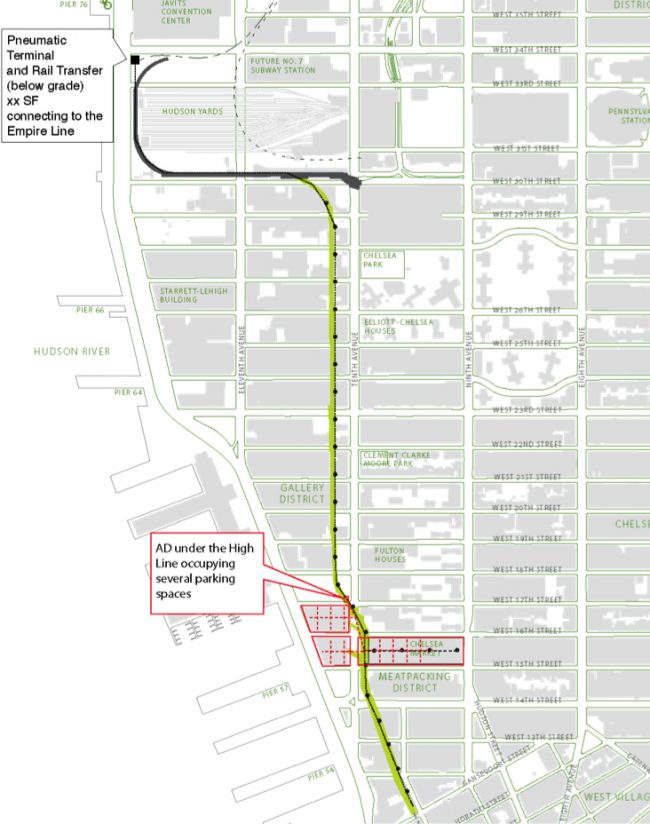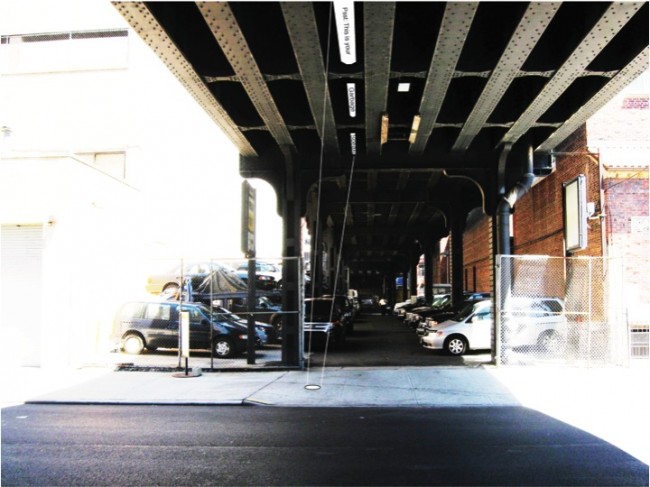
We are celebrating 15 years — and counting — of stories that are deeply researched and deeply felt, that build a historical record of what the city has been.
We are celebrating 15 years — and counting — of stories that are deeply researched and deeply felt, that build a historical record of what the city has been.
The opening of Brooklyn’s Sims Municipal Recycling Facility in December of last year provided a good occasion to consider how we collect and treat solid waste in New York City. The plant – with its reclaimed steel construction, rooftop solar panels, and flood-protecting bioswales – is a shining example of significant public and private investment in the recycling program. But the plant also serves as a reminder of how far we have to go. [For more on the Sims Facility, please read our interview with Thomas Outerbridge and check out other UO content on waste. –Ed.]
Last month, the Center for Architecture convened a panel to discuss the history of solid waste management in New York City, what other cities are doing, and what the future might hold in this arena. For decades, solid waste collection in the city has been inefficient at best and corrupt at worst. Meanwhile, technologies that streamline the collection of waste or generate energy from it have begun to be deployed on a grand scale in other parts of the world. These are promising signs for New York City.
In 1934, after decades of protest, New York courts ordered an end to ocean dumping of municipal solid waste. That left us with two primary choices, says Robin Nagle, anthropologist-in-residence at the City’s Department of Sanitation: burn it or bury it. But New York City has a long history of not only dumping waste in the ocean, but building on top of it as well. In 1657, Peter Stuyvesant allowed New Amsterdammers to dump solid waste at specific points along Manhattan’s shore. Slowly the outline of the island expanded outward. The southern half of Governors Island was sculpted from earth dug out during construction of the Lexington Avenue subway in the 1900s. Battery Park City sits on land excavated from the World Trade Center construction site next door.
After ten years of fighting, in 1947, Staten Islanders lost their campaign to block the landfilling of Fresh Kills, an estuary on the western shore of the island. It grew into the largest landfill in the world, and was at one time one of only two manmade environments visible from space. Promising it was a temporary measure, NYC transportation/parks/sanitation czar Robert Moses pledged to shut it down in 1951, but instead it kept growing. Fresh Kills Landfill finally closed in March 2001. But just six months later, Governor Pataki ordered Fresh Kills to accept debris from the World Trade Center wreckage site. In 2002, the city began converting the site into a park, in what is expected to be a 30-year process. Nagle contends Freshkills Park is the city’s most ambitious parks project since Central Park’s debut in the 1850s.
Today, all of New York City’s waste goes out of state, including to places as far away as Ohio and South Carolina. The environmental impacts — not least from barge and truck emissions — are huge. Juliette Spertus, an architect and co-founder of the sustainability consultancy ClosedLoops, argues that waste is an urban flow that would benefit from urban design expertise. But designers don’t tend to think about waste; it is an afterthought in the design of our buildings and cities. According to Spertus, somehow we’ve become adept at environmental remediation but we don’t yet know how to design for waste flows.
But we do have one networked system that treats waste as a flow, Spertus notes: the sewer. The efficiencies of that dirty system are made plain where it is absent; Dubai has no sewer — all wastewater is trucked out, exacerbating traffic, emissions, and road wear. But the idea of waste collection via tube isn’t entirely novel. Pneumatic tubes were developed in the 1960s, primarily for intra-building postal delivery. In the United States, their use for waste has been limited to small, discreet areas (Disney World, Roosevelt Island). But they are used on a much greater scale in cities like Stockholm.

Proposal for linking Hudson Yards’ pneumatic trash system with tubes that would run under the High Line | Image by Juliette Spertus
Studies funded by New York State’s Energy Research & Development Authority and Department of Transportation looked at the densest neighborhoods in Manhattan as potential candidates for a tubing system. Retrofitting existing cities is expensive, so Spertus proposes we integrate new collection networks into existing linear infrastructures like the High Line and the 2nd Avenue subway. Just along those two small stretches of Manhattan, a tube collection system could eliminate 75,000 truck miles per year.
Hudson Yards — the $20 billion ground-up neighborhood sprouting on Manhattan’s West Side — will boast pneumatics, organics collection, and a system of collecting and analyzing urban habits it is calling a “quantified community.” Waste will be metered, so users can adjust their behavior. Indeed after water use started getting measured in the 1970s, New Yorkers cut their water consumption by 15%. Spertus suggests using a combined High Line-Hudson Yards district as a pilot: a pipe system would collect organic material from neighborhood restaurants, transporting them under the High Line to an anaerobic digester to generate energy.

Proposed pneumatic trash tubes under the High Line with lighting to remind New Yorkers of waste and the infrastructure needed to deal with it | Image by Juliette Spertus
Spertus acknowledges the massive contribution of the new Sims plant in Brooklyn. But it can only be as good as its inputs, and our recycling rate remains stubbornly low. She wonders why the city, which has proven so adept at squeezing public benefits like parks and space for schools out of a feverish development climate, cannot prioritize waste infrastructure using the same methods. Nagle goes further. She suggests a complete rethinking of our manufacturing and consumption processes is needed to stem our nation’s great tide of trash and urge us to revalue our material possessions. We must begin to internalize the externalities our wasteful culture inflicts on the environment. So the Sims facility is an important milestone in the arc of New York City waste treatment, but we cannot afford for it to be the last.
Correction: An earlier version of this article stated incorrectly that New York began shipping its trash out of state in 1934, that Peter Stuyvesant legislated dumping locations in 1537 rather than 1657, and that the process of turning Fresh Kills into a park started in 2008 rather than 2002.
The views expressed here are those of the authors only and do not reflect the position of The Architectural League of New York.